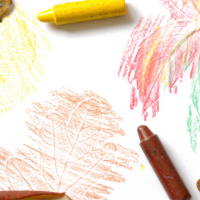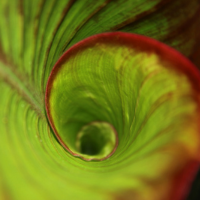2nd June 2023
Texture
Today we are going to explore our sense of touch and, in particular, the myriad textures that can be found around us in the natural world.
The varied textures of tree bark, leaves, rocks, and other materials offer a tactile experience that can be both stimulating and calming.
Our sense of touch is important in nature because it helps us navigate our environment and connect with the world around us. By feeling the textures of natural objects, we can better understand and appreciate the intricacy and beauty of the natural world.
Live event
*You can use a timezone converter to check the workshop time in your area
2nd June, 7pm Ottawa (EDT); 3rd June, 9am Brisbane (AEST)
Mike Hendley - From Two To Three Dimensions: Techniques For Creating Texture And Depth In Pencil Art
Nature journaling prompts and ideas
The texture of leaf veins varies depending on the plant species. Some veins may be thick and prominent, while others may be thin and barely visible. In some leaves, the veins may form intricate patterns that we can capture in our nature journals using a simple technique called leaf rubbing. For a tutorial on how to create leaf rubbings, watch this video from the Carnegie Science Centre. For a different effect, try this leaf resist technique described by Kelly Johnson from Wings, Worms and Wonder.
When we deliberately focus our attention on just one sense, we are able to experience it more fully. Try closing your eyes while exploring the texture of an object in nature. How does it feel? What words would you use to describe the sensations you experience through your fingertips? How could you capture these impressions of texture in your nature journal?
Each tree species has a unique texture to its bark. In fact, the texture of tree bark is one feature that is often used when identifying tree species. There are countless types of tree bark and some wonderful descriptive words we can use to capture the texture in our journals. Explore the bark of trees around your neighbourhood. What words could you use to describe what you notice? Is the bark smooth, rough, spiky, ridged, papery, knobby, corky, flaky, scaly, furrowed, cracked, shaggy, peeling or grooved? Find your own words to describe the amazing texture of trees around you.
Looking at the world using a magnifying tool, such as a jewellers loupe, hand lens or magnifying glass, is a magical way to experience the textures of nature. When you look up close, you will often be surprised to see that the texture is not what you originally expected. You might see tiny ridges, hairs, grooves or bumps.
Go outside with a magnifying tool and look closely at the texture of objects you find. Do you notice anything surprising? How could you capture this in your nature journal?
Sometimes the texture and patterns you see through a magnifying tool can look like whole landscapes! Take a walk around your neighbourhood and see if you can find textures that look like mountains, waves, deserts or other landscapes. Can you capture this in your nature journal?
Different textures can be represented in your nature journal using different media. Play around with different mark-making tools to see how you can portray various textures in your journal.
If you use watercolour, there are many wonderful ways to create texture including using salt, tissue paper, plastic wrap, and water spray. Artist Liz Chaderton has some wonderful videos explaining how to explore texture in watercolour, including this one: Watercolour Texture - 27 simple tricks for watercolour texture.







